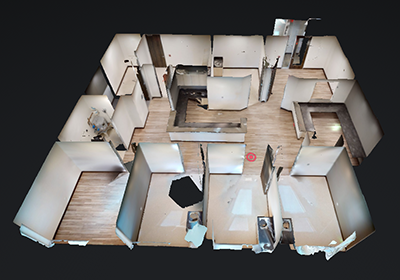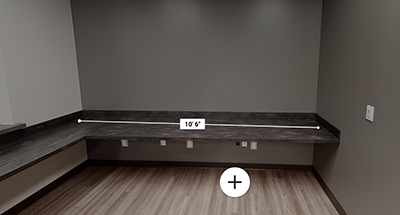
By Zac Monsees
As the COVID-19 pandemic has forced the U.S. and many other countries to adopt social distancing policies, businesses and entire industries have been abruptly thrust into a new remote technology world. Commercial real estate has been and will remain hyper-local, but brokers, investors, landlords and tenants are being forced to find new ways to execute local business from afar. Fortunately, technology has advanced in recent years to allow for this kind of communication – namely, virtual reality.
Tenants and potential buyers no longer need to be physically on-site to attain a solid understanding of a real estate asset. With the ubiquitous adoption of Google maps, users can begin to understand the amenities in the area. For those interested in a specific space or asset, said space can be toured virtually through a virtual reality platform with the proper software and hardware, such as Oculus and Matterport. The platforms offer different views, including a two-dimensional floorplan from directly above the space, a three-dimensional “dollhouse” angle that shows walls and doors, and a first-person walk-through perspective. Here is an example with one of Transwestern’s properties in Houston.


Virtual reality technology is already well-established in the residential real estate realm. Coldwell Banker reported that 77{ff66251fa959225ec0415bec498104472c710c05756e34120ff9c6ac4cef9161} of residential real estate buyers will take a virtual reality tour. However, the technology has only recently gained traction in the commercial real estate market as an effective communication and marketing tool, and it will only be solidified during the coming weeks or months as professionals work from home during the pandemic.
Virtual reality technology allows for commercial real estate advisors to show spaces with planned or contemplated improvements, or even multiple iterations of different fixtures that could be allocated within the space. This gives prospective buyers or tenants a lifelike feel of a space and its layout. Some technologies even enable users to take measurements of spaces, allowing for precise furniture placement. It also reduces downtime and the need for costly market-ready work, which can save landlords significant time and resources. After all, how often is carpet installed speculatively, only to be removed by the incoming tenant? Virtual reality technology aids in relieving some of that frustration.

For the Bay Area, and specifically San Francisco, much of the space for sale or lease is being marketed toward high-growth technology companies that have limited experience with long-term leases and construction timelines. A virtual reality tour can act as a conduit for communication between the potential tenant and the landlord without a costly capital outlay and change orders associated with construction.
As with most forms of innovation, there are a few drawbacks to the technology to consider. Under normal circumstances, it hinders the in-person contact between individuals involved in a transaction. Commercial real estate is a relationship-driven business and cutting out facetime can potentially make it more difficult for an advisor to get a comprehensive understanding of a client’s business goals and build a long-term relationship. However, the current COVID-19 pandemic has everyone working in a new environment. What was once a drawback is now a primary benefit. Additionally, some of the hardware and software is still a bit clunky, which has caused some users to experience mild motion sickness on virtual tours.
There is no doubt that the commercial real estate industry will further adopt virtual reality in the near-term due to social distancing. However, as the software and platforms are improved to smooth out the experience and advancements in the technology make it more cost-effective, it will certainly become a mainstay in the business.
Zac Monsees is a Vice President at Transwestern, specializing in the leasing and sales of creative buildings throughout San Francisco.

